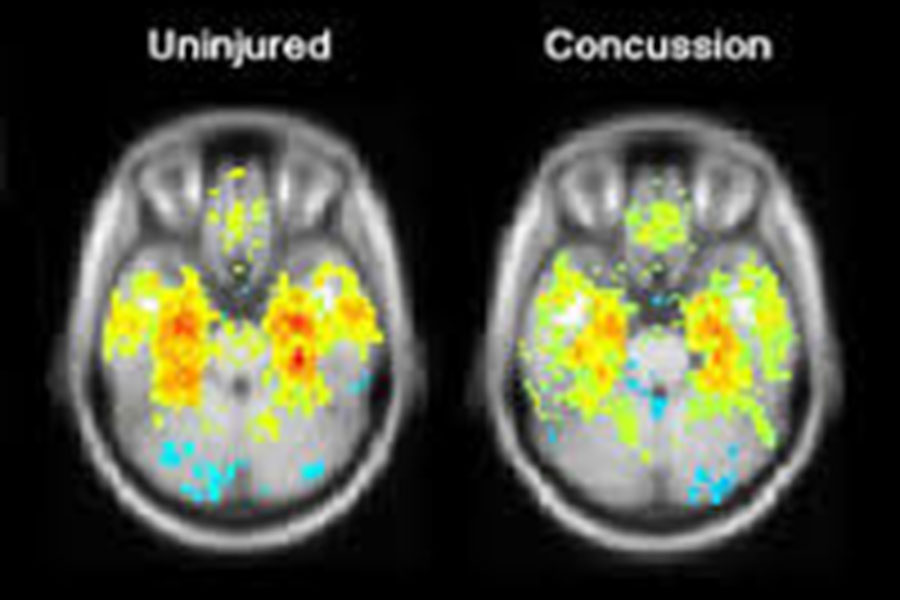The initial diagnosis of concussion is based on evaluation of the symptoms a person reports, or someone else observes, after sustaining the injury. Concussion is commonly divided into three different types: Grade 1, Grade 2, and Grade 3. The chart below distinguishes the features of each:
[su_table]
| Grade | Behavior | Signs | Time |
| 1 | Confused but remains conscious | Temporarily confused, dazed, unable to think clearly, trouble following directions | <15 minutes |
| 2 | Remains conscious but develops amnesia | Similar to Grade 1 | >15 minutes |
| 3 | Loss of Consciousness | Noticeable disruption of brain function exhibited in physical, cognitive and behavioral ways | Unconscious for seconds or minutes |
[/su_table]
When a person exhibits evidence of brain dysfunction, neuropsychological assessment is used to determine the functional impact of the injury. The assessment includes a series of tests that objectively measure specific brain functions and assist clinicians in determining which area of the brain was injured and which areas are still intact. The tests evaluate attention span, orientation, memory, concentration, language, new learning, mathematical reasoning, spatial perception, abstract and organizational thinking, problem solving, social judgment, motor abilities, sensory awareness, and emotional characteristics and general psychological adjustment.
Brain imaging such as CT scans and MRIs rarely show evidence of injury due to the diffuse and subtle nature of concussions. Some of the more sophisticated and expensive imaging modalities that are available include positron emission tomography (PET), single photon emission computerized tomography (SPECT) functional magnetic resonance imaging (fMRI), and diffuse tensor imaging (DTI). These imaging studies are currently not as readily available as the CT and MRI scans.
The blog topics for this month are:
- What exactly is a concussion? (1/2/15)
- How is a concussion diagnosed? (1/9/15)
- What is post-concussion syndrome? (1/16/15)
- How is a concussion managed? (1/23/15)
Note: To see all posts in this topic, click here










